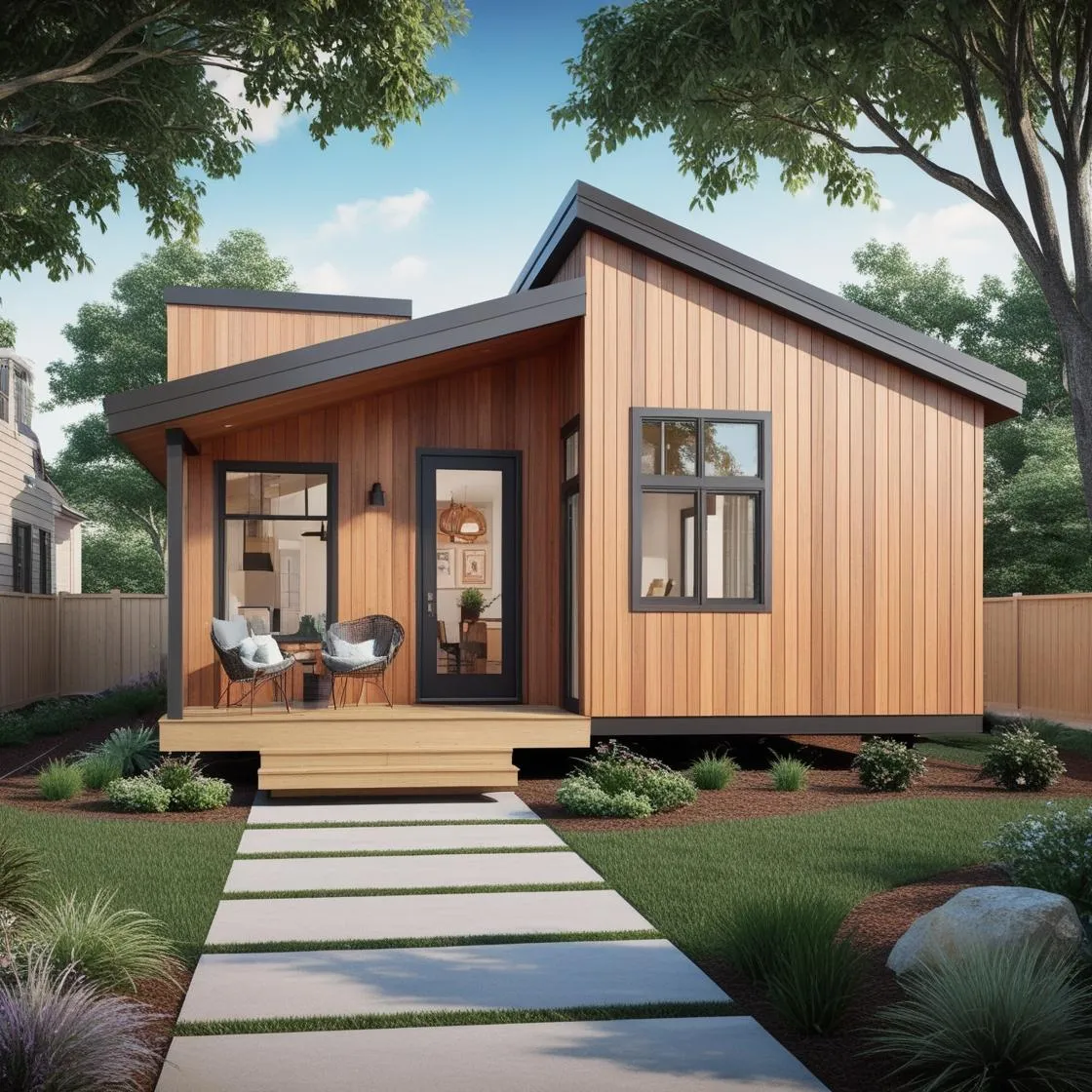Refind Realty Blog

The Trend Towards Smaller, Affordable Homes: What Buyers Need to Know
The Trend Towards Smaller, Affordable Homes: What Buyers Need to Know

In today’s bustling real estate market, it's no secret that finding an affordable home can feel like searching for a needle in a haystack, especially in the wake of rising interest rates and economic uncertainty. Surprisingly, there's a silver lining emerging on the horizon: builders are pivoting towards creating smaller, less costly homes. Let's explore this exciting trend and how it might just make your homebuying dreams more attainable.
Why the Shift to Smaller Homes?
The shift to smaller homes is not just a fleeting trend—it's a response to changing market dynamics and buyer preferences. After the pandemic, many of us were drawn to larger homes to accommodate remote work and family needs. However, with current economic conditions tightening budgets, builders have wisely adapted.
The Numbers Don’t Lie
Recent data reveals that homebuyers are now gravitating towards homes around 2,070 square feet, a noticeable drop from the 2,260 square feet average from 20 years ago, according to the National Association of Home Builders (NAHB). This evolution signifies an important change in consumer priorities.
What’s Driving This Change?
There are several factors fueling this trend towards smaller homes:
Affordability Concerns: With budgeting a top priority, many buyers are looking for homes that won’t break the bank. Smaller homes naturally come with smaller price tags.
Market Demand: Builders want to create what they know will sell, and smaller homes are in demand right now.
Economic Pressure: As inflation and interest rates put a strain on finances, the focus has shifted towards more economical living.
The Benefits of Buying Smaller Homes
Buying a smaller home can unlock a variety of advantages that go beyond just lower purchase prices. Here are a few compelling benefits:
1. Lower Costs Upfront
Reduced Purchase Price: Smaller homes generally mean smaller mortgage amounts.
More Negotiable Offers: Builders are often keen to sell and may offer incentives, paving the way for better terms.
2. Ongoing Savings
Lower Utility Bills: Smaller spaces typically require less energy to heat and cool.
Less Maintenance: Newer homes come with modern materials and technology, which can translate to fewer repairs over time.
3. Quality of Life Improvements
Easier Cleaning: With less square footage, home upkeep becomes more manageable.
Efficient Designs: New homes often feature smart layouts that maximize usable space without unnecessary square footage.
The Role of Builder Incentives
One of the most exciting aspects of this trend is the range of incentives builders are now offering.
Incentives on the Rise
According to recent findings from Zonda, over 50% of builders are providing attractive incentives to prospective buyers. Here are some of the most appealing options:
Mortgage Rate Buydowns: Lower initial payments help ease your financial burden.
Upgrades Included: Builders may offer premium fixtures or appliances at no extra cost.
Closing Cost Assistance: Some builders are willing to help cover these fees, making your move-in costs more manageable.
The Importance of Monthly Payments
John Burns, CEO of John Burns Research & Consulting, emphasizes that for many buyers, the monthly payment is paramount. Builders are responding thoughtfully to this need by:
Creating smaller, more efficient homes.
Offering financial incentives to keep monthly payments within budget.
The Perks of Going Brand New
Now, you might be wondering: why should I consider a newly built home? Let’s unpack a few reasons:
1. Modern Amenities
New homes come equipped with the latest features and technology, which can enhance your quality of life:
Smart home integrations (thermostats, security systems, and lights).
Energy-efficient appliances that save money over time.
2. Flexibility in Customization
Many builders allow buyers to personalize homes to a certain extent, offering options that cater to individual tastes and needs.
3. Warranty Benefits
Buying new often means enjoying warranties on major systems and appliances, providing peace of mind for the new homeowner.
Making the Most of Your Homebuying Journey
So, what can you do to take advantage of this trend toward smaller homes? Here are some actionable tips:
1. Work with a Real Estate Agent
Partnering with an experienced local agent who understands the market can simplify your search. They can help you navigate available inventory and negotiate on your behalf.
2. Explore Different Locations
Sometimes, expanding your search area can yield better price options. Consider neighborhoods that may not initially be on your radar.
3. Be Open-Minded
While a smaller footprint might feel limiting at first, think creatively about how to maximize your space. Flexible rooms can serve multiple functions.
4. Investigate Builder Incentives
Always ask about available incentives! Builders want to sell, and they may have unique offers that could significantly impact your budget.
Conclusion
In today’s evolving real estate landscape, smaller, more affordable homes present an exciting opportunity for savvy buyers. With builders pivoting to meet our budget-conscious demands, there’s never been a better time to explore what’s available in new home construction. Remember, these smaller homes come with perks like reduced costs and modern amenities that can significantly enhance your living experience. So, whether you're a first-time buyer or looking to downsize, there's a treasure trove of options waiting for you.
Frequently Asked Questions (FAQs)
1. Why are smaller homes more affordable?
Smaller homes generally have lower construction costs and require less energy to maintain, making them more budget-friendly.
2. What incentives are builders currently offering?
Incentives can include mortgage rate buydowns, closing cost assistance, and upgrades or special features included in the purchase price.
3. How can I find newly built homes in my area?
Consider reaching out to a local real estate agent or using online real estate platforms that list new constructions.
4. Are smaller homes a good investment?
Absolutely! As demand for affordable housing continues to grow, smaller homes can appreciate in value while providing lower ongoing costs.
5. What should I consider when buying a smaller home?
Think about your lifestyle needs, potential for customization, and how to utilize the space effectively to make the most of your living area.
BLOG NAVIGATION
Contact Me By Filling Out
The Form Below
We Can Help You Reach Your Real Estate Goals!
Get In Touch With Me
Office 1229 E. Pleasant Run Ste 224, DeSoto TX 75115
Call :(713) 505-2280
Email: [email protected]
Site: www.stevenjthomas.com

Facebook
Instagram
X
LinkedIn
Youtube
TikTok